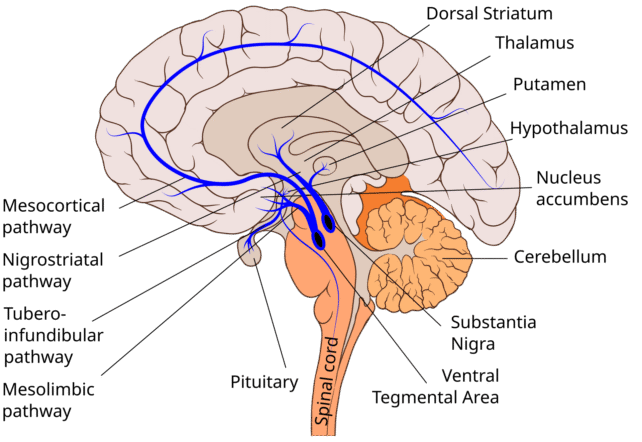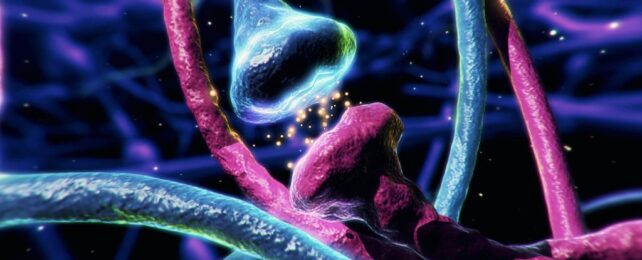Dopamine is one of the most extensively studied chemical messengers in the human brain, and yet scientists are still figuring out how it works to accomplish so much.
For years, the classic view has been that, when released, dopamine slowly diffuses through the brain like a chemical megaphone, broadcasting information far and wide to numerous target cells.
Recently, however, that perspective has changed. Newer research suggests that dopamine is also capable of short, sharp whispers, precisely directed within milliseconds to neighboring cells.
If researchers are right, this localized signal could be a "fundamental building block" that's overlooked in the brain's dopamine system.
Related: Caffeine Seems to Have a Blocking Effect on Dopamine, And Here's Why
Dopamine in the brain is different to dopamine in the rest of the body. In the blood, dopamine helps modulate the function of multiple organs as well as our immune responses.
In the brain, it's a chemical messenger involved in mediating a diversity of animal behaviors – from movement and mood to sleep and memory to reward and motivation.
Neurons that release dopamine are known to do so with different firing patterns, and yet it's not clear what messages these specific signals encode, or why.
The ability to send both fast and slow signals could explain how the brain's dopamine system can achieve so much with such specificity.

Under a special microscope, which is well-suited to imaging living tissues, scientists at the University of Colorado and Augusta University in the US triggered a release of local dopamine in the brains of live mice.
They then watched, using fluorescent staining, as it activated receptors in only a few, tiny areas of nearby neurons. This short-range activation elicited a rapid neural response. Broader dopamine release, meanwhile, is widespread and elicits a slower response.
"Our current research found that dopamine signaling and transmission in the brain is much more complex than we thought," says pharmacologist Christopher Ford from the University of Colorado.
"We knew that dopamine plays a role in many different behaviors, and our work gives the beginning of a framework for understanding how all those different behaviors could all be regulated by dopamine."
The specific neurons studied by Ford and colleagues come from the brain's striatum – a part of the basal ganglia involved in motor and reward systems that is rich in dopamine-releasing neurons.

The striatum receives dopamine inputs from various parts of the brain, and it is implicated in neurodegenerative disorders like schizophrenia, addiction, and ADHD.
Parkinson's disease, for instance, is marked by a degeneration of dopamine neurons connecting to the striatum.
A better understanding of how dopamine sends signals in this part of the brain could be crucial for coming up with new treatments for a variety of conditions.
"We are really only at the tip of the iceberg in trying to understand how dysfunctions in dopamine contribute to diseases like Parkinson's disease, schizophrenia or addiction," says Ford.
"More work is needed to grasp how these specific changes in dopamine signaling are affected in these different neurological and psychiatric diseases."
The study was published in Science.
